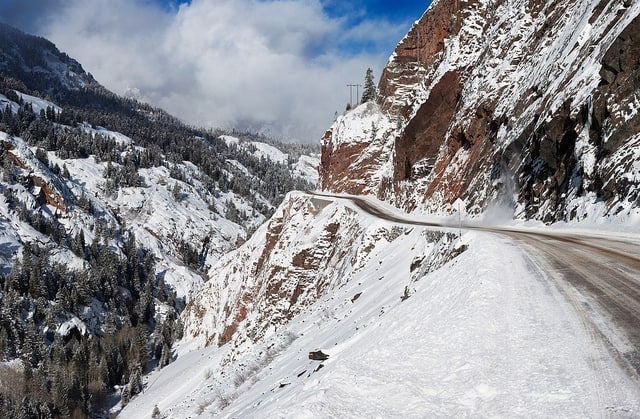Truck driving is one of the riskiest jobs in the U.S., but the majority of professional drivers get through their careers without being involved in major accidents. The more skilled and safety conscious drivers are, the less likely they are to cause wrecks. But some things, like road designs, are out of a driver’s control. Based on driver experiences, U.S. Department of Transportation data and harsh weather, these are the top five U.S. roads that truckers should avoid whenever possible.
U.S. Highway 2 in Montana
According to the University of Minnesota, U.S. Highway 2 (US-2) in Montana has the highest traffic death rate compared to the rest of the highway. Winter weather conditions make it particularly dangerous.
This 760-mile stretch of US-2 — from the Washington state line to just east of Bainville — is prone to high winds, blizzards and black ice. It runs through extremely rural areas that are far apart from each other. The emergency response time of ambulances averages 80 minutes. Because of the limited population, there is not much traffic and so people tend to drive fast.
U.S. Highway 550 in Colorado (The Million Dollar Highway)
The Million Dollar Highway is the portion of U.S. Highway 550 in Colorado, from Ouray to Silverton. It got its name because it cost a million dollars to build it all the way back in the 1880s.
This 25-mile stretch of the highway has many twists and turns through the mountains, ascending to an elevation of up to 11,000 feet. The weather in this part of the country can be erratic, with frequent snow, ice and high winds several months of the year. What makes this stretch of US-550 especially dangerous for truckers is the lack of shoulders or guardrails, and the drop-off can be extremely steep.

Interstate 95 in Connecticut
Interstate 95 runs for more than 1,900 miles from Houlton, Maine, to Miami. It’s one of the nation’s oldest highways, and it’s the longest north-south interstate in the country.
Because it runs through numerous heavily populated cities, especially in the Northeast, I-95 accounts for many highway fatalities each year. The majority of accidents on this highway happen on an 8-mile stretch in the city of Norwalk, Connecticut. Winter storms, springtime heavy rains and occasional high winds add to the risk of potential tractor-trailer wrecks.
Interstate 10 in Arizona
Arizona’s share of Interstate 10 totals more than 360 miles. Because of the high traffic volume and lack of median barriers, the 150-mile span from Phoenix to the California border is among the nation’s most dangerous highways. It averages about 85 fatalities per year. There is just one actual fuel stop located at the halfway point, in Coldfoot.
This section of I-10 consists of long desert stretches, which tend to lull drivers into inattention.
I-10 is part of the original interstate highway network, which started in 1956, and is America’s fourth-longest interstate highway.
Dalton Highway in Alaska
Alaska’s James W. Dalton Highway — known as the Dalton Highway or Alaska Route 11 — is a highly dangerous route, mainly because it winds through mountainous terrain. It has only one fuel stop and little access to emergency services.
The Dalton Highway runs for 414 miles, from Fairbanks to Deadhorse, and is the main road for truckers from Fairbanks to the northern areas of the state. It’s infamous for dangerously icy driving conditions.
What makes this road so bad is how it meanders and winds through the mountains of the Brooks Range, where America’s lowest temperature of 80 degrees below zero was recorded in 1971. Making issues worse, the Dalton Highway was opened to tourists in 1994. Usually twice a day, helicopters patrol the area looking for breakdowns and accidents.








Donn Treece
There are many fuel stops along the I-10 corridor in Arizona. The section from Phoenix, (not counting the ones in the Phoenix metro area) has 5 alone.
G Ridall
I run the haul road up here in Alaska I feel a whole lot safer up here than on 95 from Jersey to Maine
Wb
Coldfoot is in Alaska , Not on I10 in Az.
Doc
Great article Nick. I’ve travelled a couple of those. One of the things that leads to trouble on US-2 in Montana is that all the oldtimers remembers when Montana had no speed limits and still drive like that’s true today!
Nick Austin, Director of Weather Analytics and Senior Meteorologist
Thanks, Doc! Be careful out there.